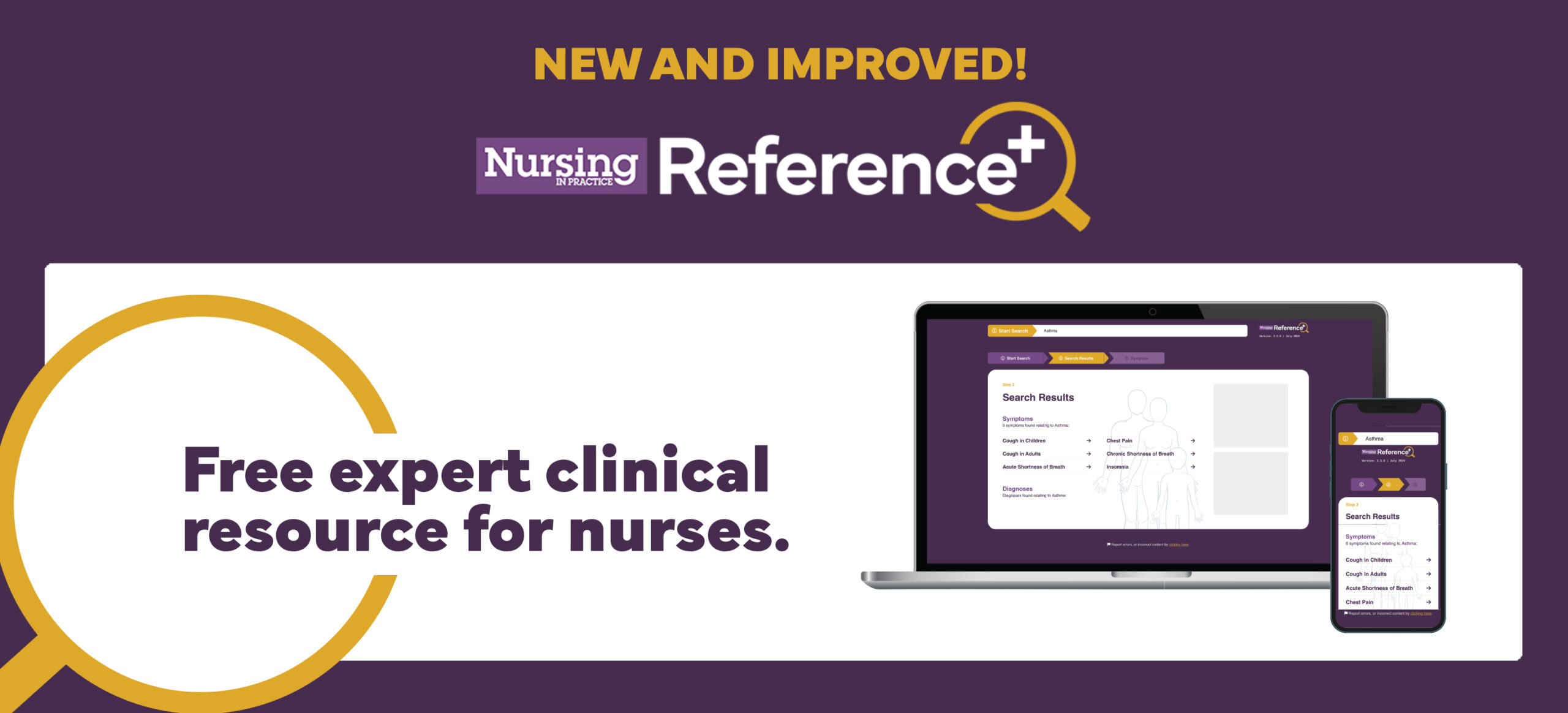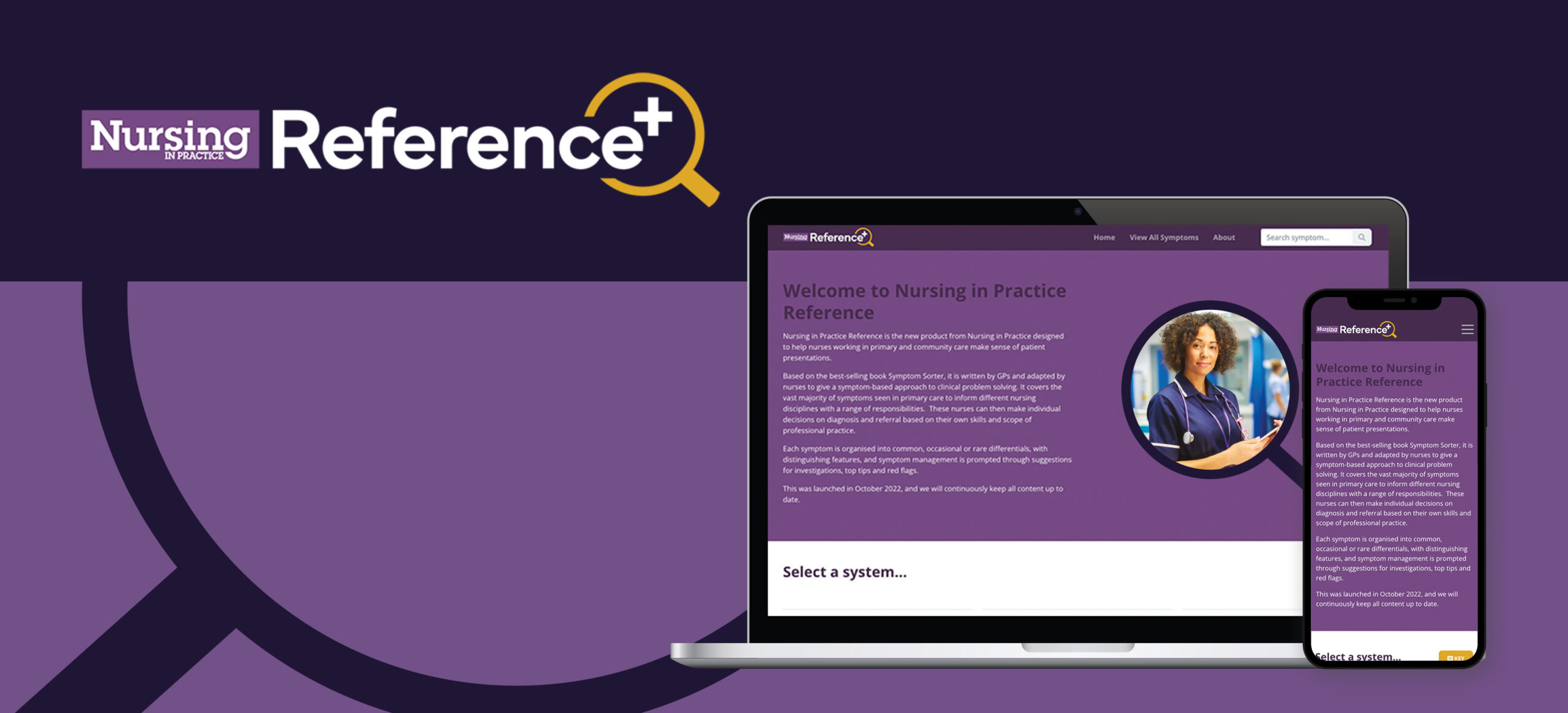We are thrilled to unveil the Nursing in Practice Reference relaunch, a unique resource designed to help nurses working in primary and community care make sense of patient presentations.
Based on the best-selling Symptom Sorter book, Nursing in Practice Reference has been written by GPs and adapted by nurses. It covers the vast majority of symptoms seen in primary care to inform different nursing disciplines with a range of responsibilities.
It is particularly relevant as practice nurses take on more GP workload and are seeing more complex clinical cases than ever before on a daily basis.
In addition, primary care networks (PCNs) now receive funding to hire advanced nurse practitioners and enhanced nurses into general practice which is putting the emphasis on senior nurses needing the expertise and clinical knowledge to see the patients that GPs would have seen before.
Unlike any other tool or website on the market, Nursing in Practice Reference enables nurses to identify the best symptom match and then a list of relevant diagnosis will be at their fingertips to help them progress towards a final diagnosis. Once that likely diagnosis is made, the nurse can complete the journey by reading a clinical summary. Over 350 diagnosis guides are available summarising all that nurses need to know, from the epidemiology to possible investigations to treatment and prognosis.
How nurses can use Nursing in Practice Reference:
- Step 1: Start your search: Type a symptom, keyword or illness into the search bar
- Step 2: Search the results of possible symptoms
- Step 3: You’re provided with a full overview of the symptom and key characteristics
- Differential Diagnosis: the likely diagnosis, subdivided Common, Occasional and Rare
- Ready Reckoner: key distinguishing features of the most common diagnosis
- Possible Investigations: investigations most likely to assist you in making the diagnosis
- Top Tips: useful hints from the authors’ experience
- Red Flags: aspects of symptoms which suggest pathology and there should not be missed or neglected
This is a must-use reference tool for nurses working in primary and community care, from start to finish in their consultations, as well as during those moments of reflection or confusion. It is a complete resource to refer to again and again, and to bookmark for easy access during patient consultations.
The experts behind Nursing in Practice Reference are Marilyn Eveleigh, Dr Keith Hopcroft and Dr Poppy Freeman. Marilyn Eveleigh is an editorial advisor for Nursing in Practice. She is the former Head of Clinical Quality & Risk and Lead Nurse at NHS Brighton & Hove and is an independent trainer and consultant for quality and patient safety. She works as a primary care nurse in East Sussex. Dr Keith Hopcroft is the co-author of Symptom Sorter and has been Pulse’s editorial advisor for more than 15 years. He is a GP in Basildon, Essex, an associate trainer and medical writer and columnist. Dr Poppy Freeman is also a clinical advisor to Pulse and set up the Covid Toolkit on Pulse in 2020 to provide GPs with up-to-date guidance on all the clinical and organisational Covid updates. She is a GP in Camden.
Please contact us today to discuss details of sponsorship packages, providing access to HCPs actively engaging with Nursing in Practice Reference.

